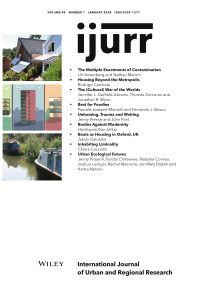Leisure activities, including place-based food experiences, have become central to defining urban identities and branding places. Mobile and affluent urbanites’ search for authentic and cosmopolitan experiences is increasingly guided by corporate digital media such as apps and websites that direct them to previously ignored working-class, ethnic and immigrant neighborhoods, which are being discursively and materially reconfigured to meet their needs, in turn causing the displacement of long-time residents. We examine the relationship between food and gentrification through the lens of digital media, suggesting that they play an important role in shaping urban experiences and cities. Specifically, we investigate narratives produced by popular digital food media, not least websites and apps providing restaurant ratings and reviews, and their relationship to ongoing patterns of gentrification in Buenos Aires, Los Angeles and Paris. Using mixed methods that combine census data with ‘hybrid fieldwork’ in online and offline foodscapes, we identify some spatial patterns and key characteristics of food-driven gentrification, highlighting the aestheticization of everyday life and its significance in encouraging and legitimizing planetary gentrification.
Details
Written by:
Pascale Joassart-Marcelli & Fernando J. Bosco
Digital Object Identifier (DOI)
/10.1111/1468-2427.13212
About DOI

